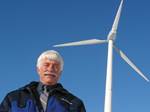Rapid Tooling Enables ‘Quick Manufacturing’
Processor Strategies
Custom molder Harbec explores new and unconventional methods of moldmaking to provide a competitive edge for its $15 million molding business.
Like quite a few custom injection molders, Harbec Plastics started as a tool-and-die shop. Thirty-six years later, Harbec has stuck close to its moldmaking roots, building 80-90% of its own tools.Based in upstate Ontario, N.Y., Harbec explores new and unconventional methods of moldmaking to provide a competitive edge for its $15 million molding business.
Harbec offers “Quick Manufacturing Solutions” (QMS), which mean progressing from art to production part in a matter of days. With an arsenal of 36 CNC milling machines, Harbec can machine parts out of plastic. Or it can use its two 3-D Systems Selective Laser Sintering (SLS) machines to make parts in a few hours via additive manufacturing. Nowadays, SLS offers ability to make fully functional prototypes, or even production parts, out of engineering-grade plastics, notes Harbec founder and president Bob Bechtold. But, he says,
“The ultimate prototype—one that truly replicates production-part properties—is an injection molded prototype.” To that end, Harbec has focused on rapid-tooling technologies—“rapid” in the sense of short lead times and faster cycles in molding.
For short lead times, says Bechtold, “We use only six mold-block sizes. We always have pre-machined blocks in inventory, so we can get started instantly on a new tool.” More important, Harbec has embraced QC-10 aluminum as a mold material—and not just for prototyping. “At least 60% of our production molds are aluminum,” says Bechtold.
“Everything we can do in steel, we can do in aluminum for half the machining cost, and in two to four weeks instead of 10-14 weeks with steel. We can achieve the same tolerances and mold the same plastics. And when we’re finished building the mold, aluminum’s superior thermal conductivity gives us 25-40% faster molding cycles.”
The only sacrifice is shorter tool life. But aluminum makes it cost-effective to cut another cavity when one wears out, Bechtold asserts. Still, many customers need educating to overcome their skepticism: “They want a Class A mold, built for at least 1 million cycles. But lots of products today don’t need a million shots.”
Another alternative is to match up the best qualities of aluminum and steel by using steel cavity inserts in an aluminum base.For maximum QMS impact, Harbec is exploiting additive manufacturing to build the cavity inserts with an EOS Eosint direct-metal laser sintering machine. This technique builds up the tooling component in layers of powdered tool steel. The porosity of the resulting part is filled by infusion with molten bronze. The result is a hard cavity with the enhanced thermal conductivity of bronze—produced in a matter of hours, with no need for CNC programming or multiple machining steps like EDM. “We can go from CAD geometry to injection molded part in one day,” says Bechtold.
He points to tiny ejector holes in one laser-sintered cavity insert: “Those would normally be the most expensive production step, but they’re now free!” Even more valuable is the opportunity to build in conformal cooling channels that wrap closely around the part. They make the “rapid” tool faster in molding as well.
Harbec continues to explore new tooling technologies. It received a grant from N.Y. State to help purchase another Eosint machine and conduct research on “biomimicry” in injection molding. Bechtold explains that animals’ internal heating/cooling is via the blood circulatory system, and one of its notable features is that the channels get smaller and more numerous as they get closer to their target. “What if a mold-cooling system could mimic that capillary structure?” Bechtold asks.
Also, Harbec is testing cavity inserts made by additive manufacturing with an epoxy photopolymer that appears able to withstand the heat and pressure of injection molding. “If it works, we’ll buy a machine to do molds,” says Bechtold.
Related Content
Improve The Cooling Performance Of Your Molds
Need to figure out your mold-cooling energy requirements for the various polymers you run? What about sizing cooling circuits so they provide adequate cooling capacity? Learn the tricks of the trade here.
Read MoreUnderstanding the ‘Science’ of Color
And as with all sciences, there are fundamentals that must be considered to do color right. Here’s a helpful start.
Read MoreHow to Reduce Sinks in Injection Molding
Modifications to the common core pin can be a simple solution, but don’t expect all resins to behave the same. Gas assist is also worth a try.
Read MoreHow to Optimize Pack & Hold Times for Hot-Runner & Valve-Gated Molds
Applying a scientific method to what is typically a trial-and-error process. Part 2 of 2.
Read MoreRead Next
‘ECO-ECONOMICS ’: Harbec Plastics Proves It Pays to Be ‘Green’
Bechtold has spent 15 years in an ongoing quest to prove that manufacturing in a sustainable manner is not opposed to profitability. On the contrary, he says his experience shows that sustainability is an economic opportunity that manufacturers can’t afford to miss.
Read MoreWhy (and What) You Need to Dry
Other than polyolefins, almost every other polymer exhibits some level of polarity and therefore can absorb a certain amount of moisture from the atmosphere. Here’s a look at some of these materials, and what needs to be done to dry them.
Read MoreUnderstanding Melting in Single-Screw Extruders
You can better visualize the melting process by “flipping” the observation point so that the barrel appears to be turning clockwise around a stationary screw.
Read More


























